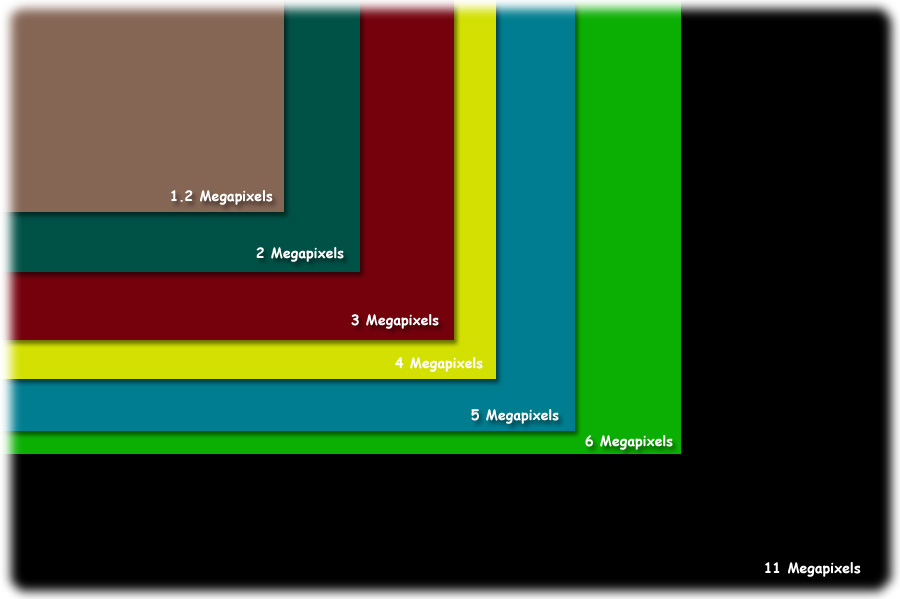MEGAPIXELS
When is it enough? How many megapixels do I need? Is it possible to have too many?
When people first think about digital cameras they immediatley think about how many megapixels the camera should be. Why a minimum number of megapixels are needed to achive a quality print, there is much more to picking a digital camera than just the number of megapixels the camera records.
With that said, megapixels are still a good place to start our discussion. Observe the chart below that shows the relative sizes of images produced by various sized sensors.

While people will argue over what the minimum resolution required to output a quality image, I have found that starting with a 200 dpi image and boosting it a bit in Photoshop gets acceptable results. Ideally, you would like a dpi of 300. Using the 200 dpi lower bound, you can determine how many megapixels you require based on the size of the image you wish to print. Even these estimates are on the safe side, with some photoshop tweaking you can go larger.
- 1 Mega Pixels: 6.4" x 4.8"
- 2 Mega Pixels: 8" x 6"
- 3 Mega Pixels: 10.25" x 7.6"
- 4 Mega Pixels: 11.35" x 8.52
- 5 Mega Pixels: 13" x 9.75"
- 6 Mega Pixels: 15.3" x 10.25"
- 11 Mega Pixels: 20.3 " x 13.5"
|